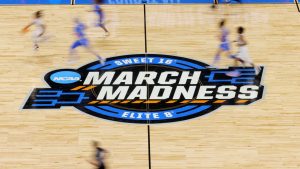NCAA Settlement Signals New Era in College Sports Compensation
Justin Loretz
Staff Writer
This past May, the NCAA and Power Five conferences agreed to a $2.8 billion settlement to resolve antitrust lawsuits concerning athlete compensation. This was a landmark decision, allowing athletes to receive direct payments for their contributions, ending the long-standing “amateurism” model. The settlement will compensate roughly 14,500 athletes annually over the next decade, each receiving $91,000 on average.
The NCAA and the earnings universities generate from athletics will finance this, shifting the revenue model to the athletes themselves. However, this forces the NCAA to cut member school distributions, affecting sports that struggle to produce income, such as gymnastics, swimming, and wrestling, which rely on university funding.
Title IX and Competitive Imbalance
Perhaps the most pressing challenge involved is ensuring Title IX compliance. As most money is expected to flow back into the men’s sports responsible for the bulk of the revenue—football and basketball—universities must ascertain how resources will be allocated fairly between men’s and women’s sports to meet federal gender equity standards. This will create a series of legal and financial hurdles for these schools as they attempt to maintain equity and profitability.
Another concern is the growing disparity between wealthy universities and smaller institutions. Larger schools with more substantial budgets can now offer higher pay to athletes. Because of their reputations, “powerhouses” have an inherent competitive advantage—a gap that will not only be perpetuated but expanded. This mirrors the imbalance seen in Major League Baseball (MLB), where the difference in payroll from the Mets to the Athletics is over two hundred million dollars.

Ethical Dilemmas and the End of Amateurism
The settlement represents a significant victory for student athletes who have fought for fair compensation, but it raises a variety of ethical questions. Paying these players may erode the educational value of college sports, transforming them into something closer to professional leagues. Major struggles will arise as athletes try to balance academics with their increasing roles as “money makers,” complicating the traditional experience student-athletes have always dealt with.
This ruling also challenges the NCAA’s historical defense of amateurism, leaving many declaring that it solidifies the end of traditional college sports. Decades of policy have backed the restriction of direct payment to players, and the matter has been extremely serious. Reggie Bush had his Heisman award stripped away due to this, and the National Championship won by the University of Southern California in 2004 was not recognized. While his Heisman was reinstated, the national championship has not been thus far.
Recent Hearings and Ruling
U.S. District Judge Claudia Wilken sent the NCAA back to the drawing board on part of their settlement. This came as a surprise, as she was expected to approve it during the preliminary stage. Her key issue was a clause that could have potentially jeopardized athletes’ eligibility to receive tax-free charitable donations. Wilken ruled that their proposal would make it difficult for schools to maintain compliance with tax-exempt status for educational institutions.
The complexity of creating fair compensation while navigating legal and financial constraints has become substantially apparent and gives some perspective as to why it has taken so long.

Thursday, however, the one-minute revision was implemented, as the term “booster” was replaced with “associated entity or individual.” This clarification is meant to better represent the deals that will be inspected so that NCAA enforcement of pay-for-play rules regarding name, image, and likeness (NIL) will be limited to review of deals with people and entities who are closely affiliated with the school. Otherwise, they may obscure the fact that some contracts are boosters paying athletes to play, which is forbidden.
Uncertainty and Opportunity
The decision pushes college sports toward a professional structure, but the consequences for equity, competition, and athlete welfare are yet to be understood. The settlement’s ripple effects may lead to further legal reforms, especially concerning state regulations surrounding NIL transparency and payment structures.
Contact Justin at justin.loretz@student.shu.edu


Great article